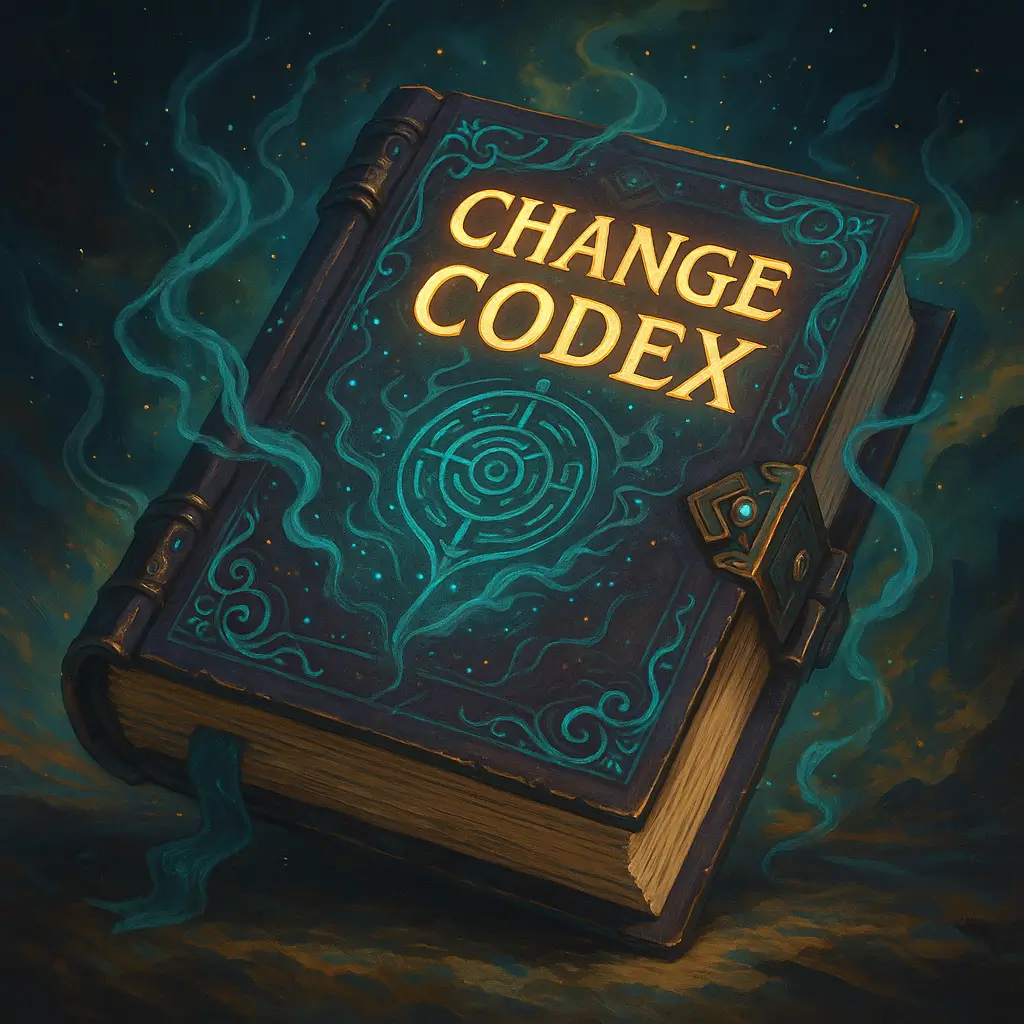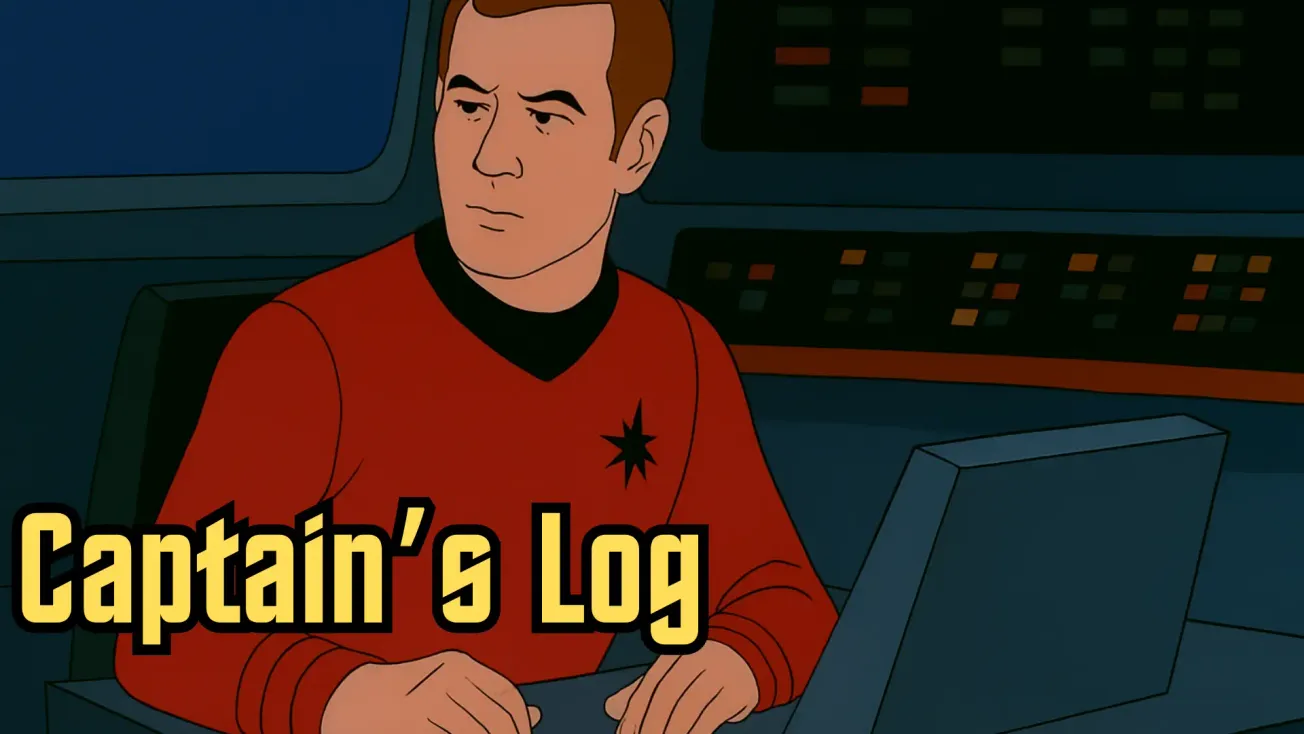Captain’s Log, supplemental.
We’ve entered yet another quadrant of stakeholder indecision.
Communications were scrambled by last-minute escalations.
Engineering (IT) insists the new platform is technically live—though no one can log in.
Morale is low. The crew is tired. Resistance to change is… well, persistent.
I’ve made a note to convene the senior officers—again. We need alignment on the go-live strategy, clarity on the change impacts, and someone to explain why we’re still calling this a “soft launch.”
But for now, I find myself alone in my ready room, reflecting on the day. This mission—like so many others—isn’t won in a single strategic breakthrough. It’s won in the day-to-day, the micro-decisions, the tiny course corrections. And unless I write them down, I won’t remember them.
Starfleet Has a Record. You Should Too.
Journaling isn’t just for captains or counselors. It’s a high-leverage practice for anyone navigating complex systems, unpredictable humans, and shifting timelines—aka, your average change initiative.
But this isn’t Dear Diary territory. This is your mission log: a daily reflection process designed to track wins, identify patterns, and steer your practice over time.
In a world where change practitioners are often too busy to stop, and too humble to take credit, journaling becomes a form of professional self-defense—and strategic foresight.
The Daily Ritual: Plus / Minus / Delta
Set aside 15 minutes at the end of each day to capture your observations. The format can be as minimal or as expansive as you like, but at the very least, log these three things:
- Plus: What went well today? What energized you or helped move things forward?
- Minus: What didn’t go well? What created friction, confusion, or delay?
- Delta: What would you do differently tomorrow or next time?
You’re not writing a novel. A few bullet points or short phrases are enough. The goal is utility, not beauty. You’re creating a field report from the front lines, not an essay for publication.
Beyond the basics, you can also capture:
- Key conversations or decisions
- Stakeholder mood or alignment shifts
- Moments of clarity or insight
- Emerging patterns of risk or opportunity
If a theme keeps showing up—positive or negative—you’ve got signal. And if something that should have been captured wasn’t, this practice will make the gaps painfully obvious (which is kind of the point).
Organize It in Your Second Brain
The real power of this practice shows up when your notes are findable. Don’t let your Captain’s Logs float around in random Word docs or Post-Its. Use your second brain of choice to give your entries structure:
- Obsidian for backlinking and networked thinking
- Notion for highly customizable, database-style tracking
- OneNote for those embedded in the Microsoft ecosystem
- Pen & paper if analog systems work for you—but consider digitizing later for AI review
Create a standard format or template for each entry. That way you’re not reinventing the log every night. You might even tag by project, theme, or stakeholder to help with sorting later.
With just a little structure, your logs go from "daily dump" to "strategic archive."
Weekly and Monthly Review: AI as First Officer
Once you’ve built a base of logs, you can bring in your AI assistant to help identify themes.
At the end of the week, ask something like:
“Summarize trends in my logs this week. What challenges are recurring? Where am I making progress? What deserves more focus next week?”
Patterns will emerge:
- Stakeholders you’re regularly shielding from escalation
- Meetings that consistently generate confusion or clarity
- Repeated blockers that leadership should know about
You can’t improve what you don’t see. A weekly review, even just 15 minutes, gives you directional insight and nudges you toward smarter choices.
Why It Matters (Especially at Review Time)
This process gives you:
- Performance tracking that reflects what really happened—not just what got scheduled
- Development goals based on your actual lived experience
- Appraisal readiness that writes itself when review season rolls around
- Self-advocacy fuel for when you need to articulate your impact, pitch a promotion, or prove your value
Change practitioners are notoriously bad at documenting their own work. This habit changes that.
The Long View: Quarterly Logs and Strategic Adjustments
Zoom out once per quarter. Either review manually or ask your AI assistant:
“What’s shifted in my practice this quarter? What’s showing up more or less? What’s become easier or harder?”
Use this time to pick one focused development goal for the next cycle. Then monitor your log for progress.
The Captain’s Log becomes a GPS—not just a record of where you’ve been, but a signal toward where you’re going.
Resistance Is Futile—but Reflection Isn’t
Without intentional reflection, days blur. You start solving the same problems repeatedly. Impact gets lost in motion. But when you pause, log, and learn, you begin to lead with far more clarity and purpose.
The Captain’s Log isn’t about being sentimental. It’s about being strategic. It’s about building a practice that respects your effort, records your evolution, and reminds you that you are making progress—even when it doesn’t feel that way.
So tonight, before you close your laptop or step away from the bridge, take five minutes. Record your Plus. Name your Minus. Set your Delta. Then get some rest. You’ve earned it.
End log.
Final Thought
You track your projects. You measure adoption. You run retros. Why not apply that same rigor to your own work?
The Captain’s Log is how you do it—without adding complexity or burden. It's how you stay present in your practice, spot your own patterns, and prepare for whatever change mission is coming next.
You don’t need to be a Starfleet officer to keep a log. You just need to care enough about your own growth to write it down.
ChangeGuild: Power to the Practitioner™
Frequently Asked Questions
Why should change practitioners bother with journaling when they’re already overloaded?
Because the habit takes less time than a single Teams chat spiral. The Plus/Minus/Delta format distills your day into actionable insights, helps you track impact, and creates a living record of your work.
How detailed should a Captain’s Log entry be?
Keep it short and tactical. Three quick notes (one for Plus, one for Minus, one for Delta) are enough. If you have the energy, add context like key decisions, mood shifts, or recurring blockers. The value is in consistency, not length.
What’s the benefit of organizing logs in a digital “second brain”?
Digital systems make your reflections searchable, taggable, and AI-ready. When it’s time for weekly, monthly, or quarterly reviews, you can surface trends without digging through scattered files or Post-Its.
Isn’t this just another retro? Why not stick with team retrospectives?
Retros focus on the collective. A Captain’s Log focuses on you. It captures your vantage point as a practitioner and leader, ensuring your perspective isn’t lost in group dynamics or meeting minutes.
How does AI actually help with journaling?
AI isn’t replacing your reflection—it’s augmenting it. By running weekly or quarterly reviews on your logs, you can surface patterns (e.g., recurring friction points, hidden wins, systemic risks) that might otherwise slip past you.
What if I prefer pen and paper?
That works too. The key is regularity. But if you stay analog, consider digitizing later so you can leverage AI reviews and future-proof your insights.
How does this habit connect to performance reviews or promotions?
Your Captain’s Log becomes a ready-made portfolio of impact. Instead of trying to recall a year’s worth of contributions at review time, you can show evidence of your decision-making, resilience, and growth.
Recommended Reading
If you enjoyed this article, you might also find these helpful:



Feeling lost in the stars of stakeholder chaos?
It’s time to build your own Captain’s Log. I coach change leaders on how to track their progress, boost reflection, and make sure their impact doesn’t get lost in a black hole.
🖖 Ready to boldly log where no one has logged before?
This post is free, and if it supported your work, feel free to support mine. Every bit helps keep the ideas flowing—and the practitioners powered. [Support the Work]











